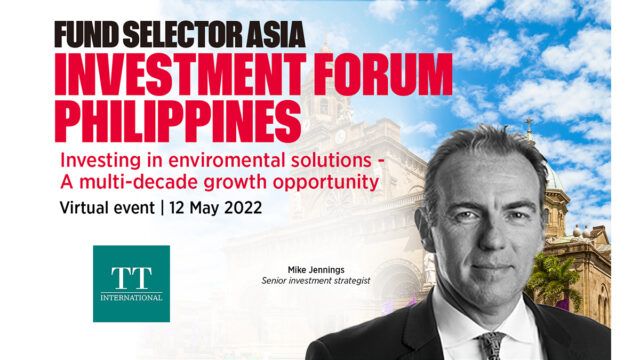Given environmental equities tend to be more skewed to growth and small-mid cap, how can exposure to them provide sufficient diversification?
While environmental equities in aggregate tend to be skewed to growth and mid-cap stocks, active managers are able to build portfolios that are diversified by factor, market cap, geography and thematic. For example, the TT Environmental Solutions strategy invests globally in seven major themes across biodiversity and climate change solutions. Its holdings range from small-cap growth to large-cap value. Crucially, its exposures are fluid as active managers can dynamically assess factors such as growth, yield, momentum and volatility, adjusting portfolios to changing risks and opportunities in the market. For example, with the inflation genie now out of the bottle and recessionary risks rising, the strategy has increased its exposure to renewable gencos and yieldcos, which should offer strong downside protection and upside gearing to inflation and power prices. It has also increased its exposure to companies that will benefit from rising commodity prices. One example is a company that is helping to decarbonise the steel industry by processing steel dust, a hazardous by-product of electric arc steel production. It makes a significant proportion of its revenue from selling recycled zinc.
To what extent should biodiversity play a greater role within investment portfolios?
Focusing solely on carbon emissions ignores the equally pervasive planetary threat of biodiversity loss. The current extinction rate is running at between 1,000-10,000x the baseline level of extinction throughout human history, with devastating consequences for the world. Without biodiversity, even if we could make the world a perfect temperature, it is unlikely to be worth living in. We need to start thinking in a holistic way as the planet does not have distinct problems with carbon emissions, biodiversity, agriculture, water, plastics and so on. It has one overarching problem: the way we treat the environment. To illustrate the symbiosis that exists between carbon and biodiversity, consider the following example: whales are responsible for 1.7 billion tonnes of carbon sequestration activity annually, yet their population has fallen 60-90% over the last 100 years. It is clear that carbon emissions and biodiversity are inextricably linked, and we need investment approaches that reflect this. TT’s Environmental Solutions strategy has biodiversity exposure primarily through its positions in the Recycling & Circular Economy and Responsible Consumption thematics.
How can investors make a tangible positive environmental impact while also generating their desired risk-adjusted returns?
We believe that the optimal way to make a tangible positive impact on the planet whilst generating attractive long-term returns is to invest directly in the ‘environmental solutions’ companies that are producing the goods, services and systems to deliver the green transition. As a species we need to fundamentally change the way we generate energy, travel, grow our food, clothe ourselves, and construct our buildings. There is a revolution coming over the next 20 years that we believe represents the biggest structural growth opportunity of a generation. Many of the areas in the environmental solutions investment universe could realistically be 10-100 times larger in a couple of decades, providing exceptionally fertile ground for stockpickers. Moreover, environmental solutions companies typically have far higher “carbon returns on carbon employed” than simple low carbon companies, with some environmental products such as insulation saving 100 times the carbon used to produce them over the course of their life cycle.
The Fund Selector Asia Investment Forum Philippines was held on 12 May 2022 and was sponsored by Janus Henderson Investors, Jupiter Asset Management, Pimco and TT International.
Find out more about what was discussed and the strategies that were presented here: https://fundselectorasia.com/events/fsa-investment-philippines/

















